We often think of nutrition, hydration, and mobility work in our preparation for sports. But how often have you considered your internal core temperature or ways to regulate that to improve your performance? Probably not very often. But, simple tactics like palm cooling have been shown to have dramatic effects in athletics. Let’s discuss how.
Thermoregulation and Performance
In the summer of 2021, I heard a couple of very interesting podcasts where a Stanford scientist, Andrew Huberman, was discussing how palmar (palms of hands) cooling could have incredible performance-enhancing effects on workouts. He mentioned that the research was not his own but from his Stanford colleague, Dr. Craig Heller. Dr. Heller was finding that when comparing workout output in terms of the number of reps and sets being able to be performed. One group used palm cooling during rest and the other did not. In this study, the palm cooling allowed for improvements of 40-60%. And..these findings were in high-level Athletes like NFL football players.
Now, as a Physical Therapist, an anatomy and physiology nerd, a strength coach, and a person who basically lives and breathes human performance I was shocked to hear of this phenomenon. I had never been taught it and had never even heard of it. And, was very curious, to say the least. I wanted to know more…and test it out for myself.
Before we get into my own journey, let’s talk about the physiology of palm cooling as it’s something that you already use without even knowing it.
Palm cooling is a way to leverage your inherent temperature regulation system. Our body temperature is centrally controlled in the brain at the hypothalamus. The hypothalamus receives temperature signals and then makes changes throughout the body in response. These responses can be both physical (sweating, goosebumps, etc) or mental (like decreasing motivation or taking some type of action).
There are peripheral ways to control temperature too. For instance, there are highly specialized areas of our body that are especially efficient at either dumping body heat or receiving heat. These areas are covered with a type of skin called glabrous skin. Glabrous skin is hairless and is found in humans on the palms of the hands, soles of the feet, and the hairless portions of the face. Glabrous skin has a special network of blood vessels below the surface called arteriovenous anastomoses (AVAs) which are direct connections of arteries to veins with no capillary beds in between. The absence of capillaries indicates that the blood passing through this system is not intended for carrying oxygen to muscles or removing carbon dioxide from the system.
The AVAs in these areas allow for the cooling or heating of the blood circulating through them and returning that blood to the body to either heat or cool it. Think about it, this is why when you are hot at night you stick your foot out from under your blanket. It’s why when you are cold you put your hands around a warm coffee mug. It’s why your mom knew to put a cool rag on your forehead when you had a fever. The reason we do these things is that our internal temperature can be efficiently regulated through our glabrous skin.
So how does all this matter during exercise, competition, or exertion?
As we exercise the temperature of our body and more specifically the working muscle begins to rise. This rise in temperature becomes detrimental to performance as it eventually causes fatigue in two ways. First, at the muscle cell level, the rise in temperature affects enzymes that are responsible for continued contractions. The rise in temperature changes the enzyme’s configuration resulting in a decreased ability of the muscle cell to contract.
The second way increased temperature causes fatigue is mental. As our temperature rises the brain receives this signal and decreases the motivation to continue working. This is likely an evolutionary protective measure preventing us from working into heat injuries or death. To recap, heat causes fatigue both physically and psychologically.
Dr. Heller, realizing this, put the glabrous skin and AVAs underneath to work by using them as a tool during exercise to combat that rising temperature. His research and that of others (this video does an excellent review of the research) have shown “palm cooling” to be effective in increasing training volume by delaying the onset of fatigue.
Again, upon learning all of this I was both curious and skeptical. I began the journey of trying to find a palm cooling device that I could use in my own experiments. There was not much to buy online, so I began to experiment with making my own. While developing prototypes I began to do my own testing and found that I was getting performance improvements of 15-30% with my own strict testing protocols – you can learn about my initial testing here.
I then began using the device with my strength and conditioning clients and they were also showing improvements in training volume. The skepticism began to recede and I began to gain more knowledge and insight from months of daily use and by reading available research.
Let’s discuss the details of palm cooling as there is some nuance to how to use it to create a beneficial temperature-regulating effect. First, the surface or material used to cool the palms cannot be too cold. Ice, for example, is so cold that it will cause vasoconstriction of the blood vessels. If the vessels constrict then the cool blood will not circulate under the palms.
It seems that the effective range is between 45-60 degrees Fahrenheit. This is cool to touch, not cold. For reference, most water fountains and cold tap water is set between 40-50 degrees. It is also ideal to cool both palms at the same time as maximizing the surface area will create a greater amount of cooled blood recirculating back to the body. Finally, do not tightly squeeze the palm cooling device as that compression could also prevent blood from flowing through the AVAs underneath.
Palm Cooling for Performance Enhancement
Now that you know about the science, physiology, research, and real-world applications of palm cooling work, let’s now discuss how to implement palm cooling into your training or competition.
 For weightlifting, powerlifting, or strength training:
For weightlifting, powerlifting, or strength training:
- Bring the palm cooling device to your training session.
- Remember, the device or substance being used should be between 45-50 degrees – NOT ice cold
- Do your typical warm-up – do not worry about palm cooling during this portion of the workout. It is still valuable to get your joints and muscles moving, mobile, and ready for bigger efforts
- During the meat of your training, simply grab and hold the palm cooling device during the rest breaks between sets.
- Do this between all sets, not just the last 3-5 “very hard sets”. Begin your palm cooling early to delay the rise in temperature. It is very likely that you’ll notice that you are capable and willing to perform more of your “very hard sets” when palm cooling. This is how palm cooling creates long-term gain. By allowing for increased training volume during a session and then ultimately over the course of a training cycle.
For the CrossFit Athletes:
- Many CrossFit workouts are broken into a strength or power session (lifting session) and then a METCON or visa versa.
- For the lifting session that is not done “for time” but meant to improve your deadlift, squat, snatch, etc. just follow the guidelines above. Simply palm cool between all sets.
- For the METCON portion of the CrossFit workout, palm cooling may or may not be possible DURING the workout but should be done prior to starting (bring body temperature back down after the lift). Many metcons will allow for palm cooling during the workout. Partner workouts, EMOMs, programmed intervals, etc. all have built-in rest during which you should definitely grab the palm cooling device to combat your rising temperature. Even workouts that would ideally be done without a break, like an AMRAP or a “for time”, often need rest breaks interjected depending on how well your fitness holds up to the challenge. Any break longer than 20 seconds or so will likely be more beneficial if palm cooling is applied.
- Competing in a CrossFit competition can also be a time to deploy palm cooling. This is a form of performance enhancement but it is not illegal or cheating. It’s no more cheating than drinking water is. There is almost always the opportunity for rest breaks in team competitions and very often in certain individual competitions as well.
For Endurance Athletes:
- Palm cooling for the endurance athlete is going to be geared mostly towards when the athlete is using interval training to prepare for longer efforts.
- Interval training on a treadmill, rowing erg, ski erg, stationary bike inside or on a track or training loop outside makes palm cooling easy as you will always have access to the device between efforts or intervals.
- Mountain bike athletes and others have reported that they keep the device in their pack and use it during rest breaks as they do not mind the extra weight while training and typically carry a pack.
- For endurance competitions: After going through the warm-up it may be beneficial to hold onto a palm cooling device for the last few minutes before the start to bring body temperature back down. This theory has not been thoroughly tested so it will be interesting to see some research on this in the future.
 Palm Cooling During Sports and Practice:
Palm Cooling During Sports and Practice:
- Athletes who participate in traditional sports can all benefit from palm cooling during their strength and conditioning sessions using the guidance above.
- Most sports are set up very well for palm cooling during practice as every practice is going to have rest breaks built in between drills like in basketball, soccer, or volleyball or between efforts like in swimming and track and field.
- Many sports are set up very well to use palm cooling during the actual game as well. Sports like basketball which have timeouts, substitutions, and breaks after quarters, periods, and halftimes allow for frequent palm cooling breaks.
As a Sleeping-Aid:
- Palm cooling can also be used as a sleep aid after a late-game or practice. Many athletes have difficulty getting their core temperature and overall sense of arousal under control after exercise or competition late in the evening. Palm cooling is reported by some athletes to assist in falling asleep under these circumstances.
Palm Cooling Devices
If you would like to try palm cooling there are a number of hacks you can easily find with a google search. However, almost every hack out there is impractical for a gym, practice, or competition setting. This is what led to me turning my prototype into a device for sale.
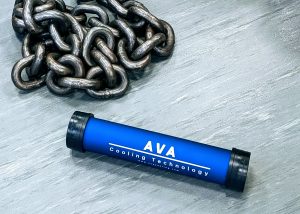
To recap, rising body and muscle temperature during exercise lead to fatigue both at the muscle cell and at the brain level by decreasing motivation. We can directly combat that rising body temperature through the method of palm cooling due to the special network of blood vessels underneath the skin. This can lead to increased performance in both training and sports by allowing for a greater volume of high-quality sets, reps, and intervals to be completed and by helping athletes become less fatigued as their competition progresses.
Palm cooling devices are now available for purchase that are practical, effective, and affordable. Give it a try and see for yourself, we’d love to learn about the effect it has on you!
Written by Kyle M. Sela, PT, DPT, OCS, SCS
Kyle Sela is a physical therapist and strength coach. His training and experiences have led to him attaining Board Certifications as a specialist in both orthopedics (OCS) and sports medicine (SCS). Kyle is a graduate of the US Army/Baylor University Doctorate Program in Physical Therapy and served on active duty in the US Army for 7 years. This time included serving as the physical therapist for a brigade combat team while deployed to Iraq as well as operating a clinic that took care of the Army Rangers in Savannah, GA.
After his time in the Army, Kyle completed a sports medicine fellowship in the Management of Division I Athletes at Duke University. Following Duke, Kyle and his family moved to the Boise, ID area where he was the Sports Medicine Program Coordinator, Sports Residency Director, and clinic manager for St. Luke’s Health System.
Kyle has helped many athletes achieve their fitness and performance goals. This includes working with Kristin Armstrong prior to the 2016 Rio Olympics where she won her 3rd gold medal in women’s cycling. Currently, Kyle physically practices in Sun Valley, Idaho splitting his time between physical therapy patients and strength and conditioning clients. Dr. Sela co-founded Movement Guides, Inc and is now the founder of AVA Cooling Technology. AVA Cooling Technology

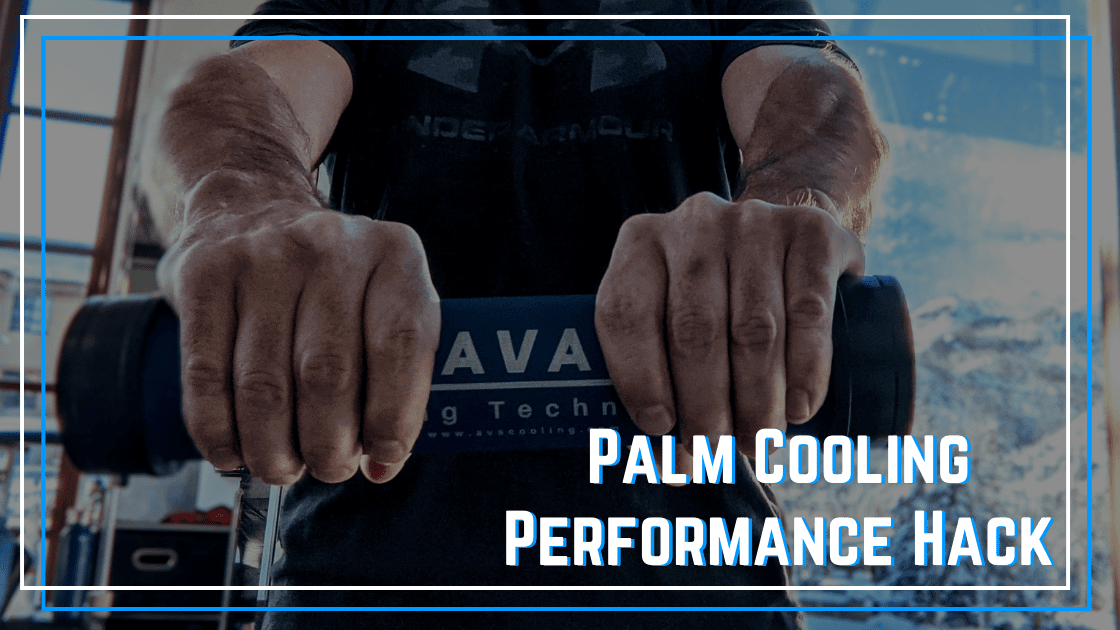
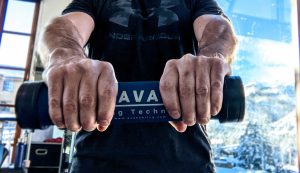
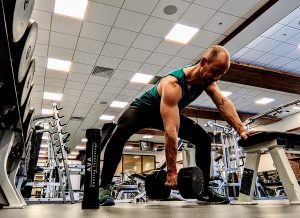 For weightlifting, powerlifting, or strength training:
For weightlifting, powerlifting, or strength training: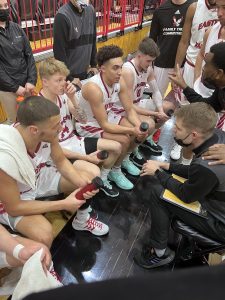 Palm Cooling During Sports and Practice:
Palm Cooling During Sports and Practice:



